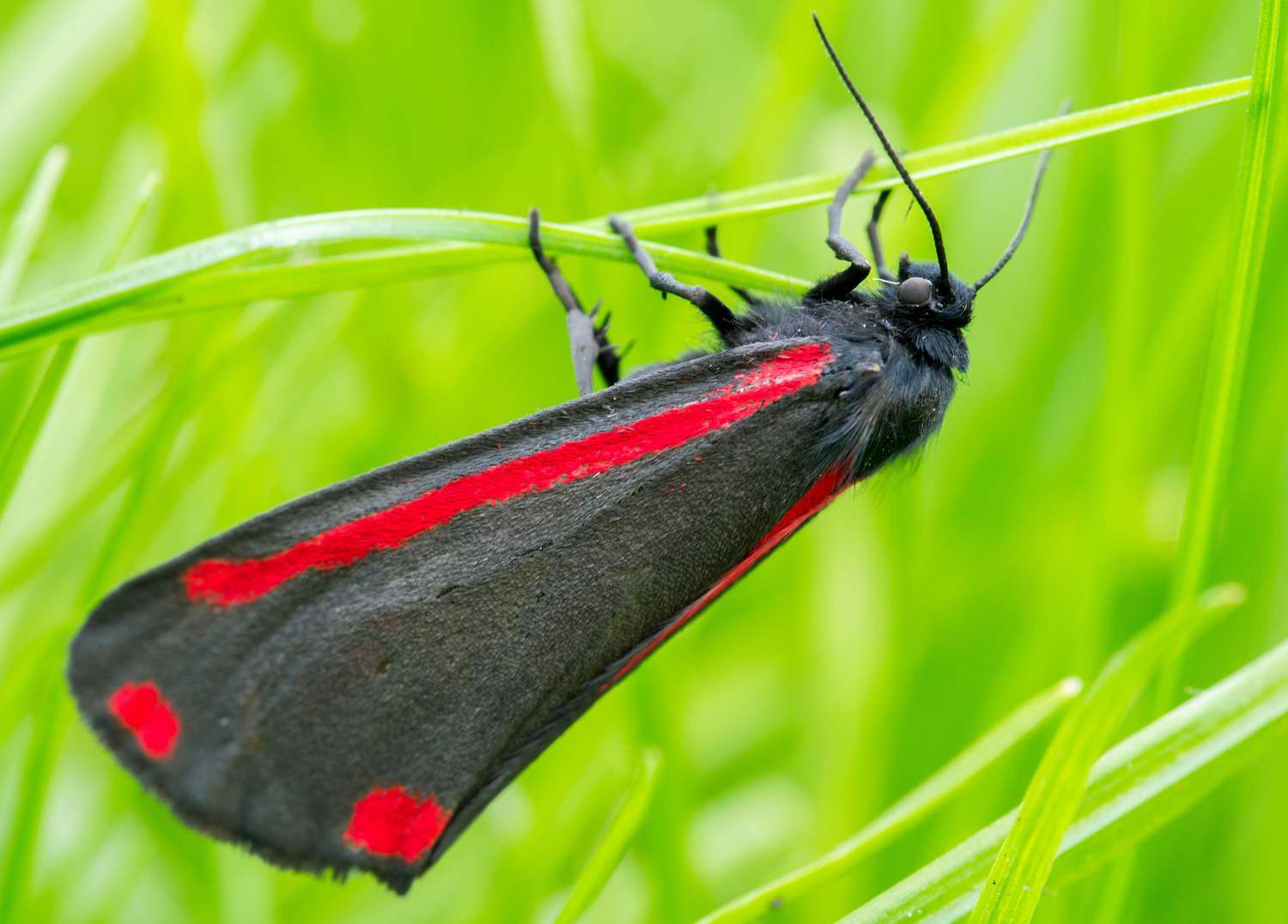Home>Gardening News and Trends>Latest News>What Is All The Insects Name?


Latest News
What Is All The Insects Name?
Modified: January 22, 2024
Discover the latest news about all the insect species and their names. Stay updated with the most recent information on insects in our comprehensive guide.
(Many of the links in this article redirect to a specific reviewed product. Your purchase of these products through affiliate links helps to generate commission for Chicagolandgardening.com, at no extra cost. Learn more)
Table of Contents
Introduction
Insects, small creatures that make up a significant portion of the animal kingdom, have captivated humans for centuries with their diverse shapes, colors, and behaviors. From the delicate flutter of a butterfly’s wings to the industrious nature of ants working together, insects play vital roles in our ecosystems. But beyond their mesmerizing features, insects are also known by a variety of names.
The names of insects are not only fascinating, but they also serve important purposes. In scientific circles, insect names help categorize and classify species, allowing researchers to study and understand their characteristics and relationships. For example, the scientific name Lepidoptera encompasses butterflies and moths, while Hymenoptera includes bees, wasps, and ants. These names provide a structured system for scientists to communicate and share knowledge.
On the other hand, common names are what most people use to identify insects in their everyday lives. Whether it’s a ladybug, grasshopper, or firefly, these names are part of our shared vocabulary. They help us communicate and connect with each other, fostering a sense of familiarity and understanding.
But insect names go beyond simple identification. Some names are downright unusual, grabbing our attention and sparking curiosity. From the death’s head hawkmoth to the devil’s flower mantis, these intriguing names add an element of mystery and allure to the insect world.
Unfortunately, not all insect names inspire wonder. Some species are endangered, and their names hold a sense of urgency and importance. By understanding and recognizing these names, we can raise awareness about the fragile balance of our ecosystems and the need for conservation efforts.
Furthermore, insect names vary across languages and cultures. While a butterfly may be called “mariposa” in Spanish, it’s referred to as “schmetterling” in German. Exploring these linguistic differences not only enriches our understanding of different cultures but also highlights the universal fascination and appreciation for insects around the world.
In this article, we will delve into the world of insect names, exploring their classification, common and unusual names, endangered species, and their variations across languages. Get ready to embark on a journey that will open your eyes to the astonishing diversity and beauty of insect names.
Importance of Insect Names
While it might be easy to overlook the significance of insect names, they play an essential role in our understanding and appreciation of these tiny creatures. Here are some key reasons why insect names are important:
Identification and Communication: Insect names, both scientific and common, allow us to identify and communicate about different species. Whether it’s discussing a pesky mosquito or admiring a colorful butterfly, having a name for each insect helps us accurately identify and discuss them in conversations, research, and educational materials.
Scientific Classification: Scientific names, or binomial nomenclature, provide a systematic way to classify and categorize insects. Each name consists of two parts: the genus and the species. This classification system helps scientists understand the relationships between different insect species, enabling them to study their behavior, habitat, and evolutionary history.
Conservation and Protection: By giving insects specific names, we can raise awareness about endangered and threatened species. Knowing the names of these at-risk insects helps us understand the urgency of conservation efforts. It allows researchers, policymakers, and conservationists to focus their resources on protecting these vulnerable creatures and their habitats.
Ecosystem Understanding: Insects play crucial roles in ecosystems, such as pollinating plants, decomposing organic matter, and serving as a food source for other animals. Understanding their names allows us to recognize and appreciate the intricate relationships they have within their ecosystems. It helps us grasp the importance of maintaining ecologically balanced environments for the well-being of all living organisms.
Cultural Significance: Insect names often have cultural significance and symbolism. For example, in many cultures, butterflies represent transformation and beauty, while bees symbolize industriousness and community. Knowing these names and their cultural meanings adds depth and richness to our understanding of different societies and their connections with nature.
Education and Research: Insect names are invaluable in educational settings, where they help students learn about different species and their characteristics. Through research, scientists can build on existing knowledge by referring to insects by their specific names, enabling a more comprehensive understanding of their biology, behavior, and ecological roles.
Overall, insect names provide a framework for understanding, appreciating, and conserving these fascinating creatures. They are not merely labels but windows into a world full of remarkable species and their intricate interconnections. By exploring insect names, we can foster a deeper appreciation for the diversity and importance of insects in our world.
Classification of Insects
The classification of insects is a fascinating field that allows scientists to organize and categorize the vast diversity of these creatures. Insects belong to the class Insecta, which is a part of the phylum Arthropoda. This classification system helps us understand the relationships and characteristics of different insect species. Here are the key levels of classification:
Phylum: Insects belong to the phylum Arthropoda, which also includes other arthropods like spiders, crabs, and millipedes. Arthropods are characterized by their segmented bodies, jointed appendages, and exoskeletons.
Class: Insects are part of the class Insecta, which is the largest group within the phylum Arthropoda. This class includes around a million described species, making up more than half of the known animal species on Earth.
Order: The class Insecta is further divided into numerous orders, each representing a distinct group of insects with shared characteristics. Examples of insect orders include Lepidoptera (butterflies and moths), Coleoptera (beetles), Diptera (flies), Hymenoptera (bees, wasps, and ants), and Orthoptera (grasshoppers and crickets).
Family: Orders are further divided into families, which consist of several closely related species. For instance, within the order Lepidoptera, there are families such as Papilionidae (swallowtail butterflies), Nymphalidae (brush-footed butterflies), and Saturniidae (giant silk moths).
Genus: Families are then subdivided into genera, which contain closely related species. Genera often share common attributes and characteristics. For example, the genus Papilio includes various species of swallowtail butterflies.
Species: The species is the most specific level of classification and represents a distinct type of insect. It is identified by a unique combination of characteristics that distinguish it from other species within its genus. Each species is given a specific scientific name, typically consisting of two parts – the genus name and the species name. For example, the monarch butterfly is scientifically known as Danaus plexippus.
The classification of insects provides a systematic framework for scientists to study and understand these diverse creatures. It enables researchers to identify and group species based on shared characteristics, allowing for more effective communication and organization of knowledge. Additionally, the classification system aids in species identification, conservation efforts, and the study of insect evolution and behavior.
By continuing to explore and refine the classification of insects, scientists can uncover new insights into the intricate relationships and adaptations of these incredible organisms. It’s a never-ending process that reveals the hidden wonders of the insect world and helps us appreciate the remarkable diversity they bring to our planet.
Common Insect Names
When it comes to common insect names, there is an abundance of terms that people use on a daily basis to identify these fascinating creatures. Common names often vary regionally, reflecting the local language, culture, and colloquialisms. Here are some well-known and widely-used common names for insects:
- Butterfly: Butterflies are beloved insects known for their vibrant colors and graceful flight. With their characteristic wings and delicate beauty, butterflies are recognized and cherished by people around the world.
- Ant: Ants are highly social insects that form complex colonies. They are known for their impressive teamwork, strong mandibles, and organized foraging behavior. Ants can be found in various habitats, from forests to urban areas.
- Bee: Bees are essential and hardworking insects known for their role in pollination and honey production. They are distinguished by their fuzzy bodies, compound eyes, and specialized mouthparts for gathering nectar and pollen.
- Dragonfly: Dragonflies are agile insects with their long bodies and powerful wings. They are expert flyers, adept predators, and are often seen near bodies of water, where they hunt for small insects.
- Grasshopper: Grasshoppers are known for their strong hind legs, which allow them to leap great distances. They are herbivorous insects that can be found in grassy areas and are known for their distinctive chirping sound.
- Ladybug: Ladybugs, also known as ladybirds or lady beetles, are small and colorful insects with distinct round, dome-shaped bodies. They are widely associated with good luck and are admired for their ability to control aphid populations.
- Mosquito: Mosquitoes are infamous insects known for their irritating bites. They are vectors for various diseases and are characterized by their slender bodies, long legs, and specialized mouthparts for piercing skin and extracting blood.
- Firefly: Fireflies, or lightning bugs, are insects famous for their bioluminescent ability. They emit flashes of light to attract mates, creating a beautiful phenomenon on warm summer nights.
These are just a few examples of the common names that people use to identify and refer to insects in their everyday lives. They are part of our collective knowledge and culture, ingrained in our shared understanding of the natural world. Common insect names, while not scientifically precise, serve as familiar labels that help us connect with and appreciate these remarkable creatures.
It’s important to note that while common names can be widely recognized, they may differ across different regions and languages. Nonetheless, the diversity and uniqueness of insect common names contribute to the rich tapestry of human language and our relationship with the natural world.
Unusual Insect Names
While many insects have common names that accurately describe their appearance or traits, there are also those with unusual and intriguing names that capture our imagination. These unique names add an element of mystery and fascination to the insect kingdom. Here are some examples of insects with unusual names:
- Death’s Head Hawkmoth: This large, nocturnal moth is named after the skull-shaped pattern on its thorax resembling a human skull. The eerie design and the moth’s nocturnal habits contribute to its association with darkness and mortality.
- Devil’s Flower Mantis: As its name suggests, this mantis has a striking appearance with leaf-like projections on its body, resembling flowers. Its deceptive camouflage and predatory behavior make it a fearsome predator.
- Elephant Stag Beetle: The male of this species has enlarged mandibles that resemble the tusks of an elephant, giving it its distinctive name. These beetles are known for their impressive size and intimidating appearance.
- Goliath Beetle: This is one of the largest beetles in the world, known for its immense size and strength. With its formidable appearance and ability to lift objects many times its weight, the Goliath Beetle lives up to its biblical namesake.
- Orchid Mantis: Named for its remarkable resemblance to an orchid flower, this mantis species has evolved to mimic petals and camouflage itself among blooms. Its elegant appearance and clever adaptation make it a truly remarkable insect.
- Celestial Eye Goldfish: Despite its name, this unique species is not a fish but a type of water bug. It earned its name due to the striking pattern on its back, which resembles the eye of the universe, adding an air of celestial intrigue.
- Twilight Longhorn Beetle: This species of beetle is known for its iridescent colors and long antennae. It is most active during twilight, hence its evocative name, capturing the mystical essence of dusk.
- Hummingbird Hawkmoth: This moth shares a remarkable resemblance to hummingbirds, with its hovering and darting flight pattern and its long proboscis for feeding on nectar. Its name pays homage to this avian doppelgänger.
These are just a few examples of the many insects with unusual and captivating names. Their names often reflect their unique characteristics, behaviors, or physical features. These intriguing monikers remind us of the diversity and wonder of the insect world and the intricacies of nature’s designs.
Unusual insect names not only pique our curiosity but also remind us of the fascinating adaptations and extraordinary forms that exist in the natural realm. They inspire us to delve deeper into the mysteries of these creatures and appreciate the incredible diversity of life on our planet.
Endangered Insect Names
Just like many other animal species, insects are also facing the threat of extinction due to various factors such as habitat loss, climate change, pollution, and the use of pesticides. The names of endangered insects carry a sense of urgency and highlight the need for conservation efforts. Here are a few examples of endangered insects and their names:
- Karner Blue Butterfly (Lycaeides melissa samuelis): This beautiful butterfly is native to North America and is listed as endangered. It is named after the Karner Blue region in New York, where it was first discovered. The butterfly is known for its iridescent blue wings and dependence on specific wild lupine plants for survival.
- Titan Beetle (Titanus giganteus): Native to South America, these massive beetles are considered one of the largest insects on Earth. They are named after the Titans of Greek mythology due to their colossal size. Habitat destruction and illegal collecting have made them critically endangered.
- St. Francis’ Satyr Butterfly (Neonympha mitchellii francisci): Endemic to the southeastern United States, this small and delicate butterfly is one of North America’s rarest butterflies. It is named after St. Francis, the patron saint of animals and the environment, and is highly susceptible to habitat destruction and fragmentation.
- Sumatran Orangutan Moth (Malaysia bicolor): Named after the critically endangered Sumatran orangutan, this moth species is found in the forests of Sumatra. Its survival is closely tied to the conservation of orangutan habitat, as it relies on the trees they inhabit.
- Hastings’ Megasoma Beetle (Megasoma actaeon): Native to the rainforests of Ecuador, this stunning beetle is threatened by deforestation. Its large size and metallic colors make it highly sought after by collectors, which further exacerbates its endangered status.
- Hawaiian Happy Face Spider (Theridion grallator): Endemic to the Hawaiian Islands, this unique spider is known for its colorful markings, which resemble a smiling face. It is threatened by habitat loss and invasive species and serves as a reminder of the fragility of Hawaii’s unique ecosystems.
- Cuban Greater Funnel-eared Bat (Natalus primus): This bat species, found only in Cuba, is critically endangered due to habitat destruction and disturbance. Its name refers to the large ears that help it navigate and locate prey in the dark.
These examples highlight just a fraction of the countless endangered insect species around the world. Their names carry a sense of urgency and emphasize the need for conservation action to protect their habitats and ensure their survival. Understanding and recognizing these names promote awareness and encourage efforts to safeguard these unique and often overlooked creatures.
Conserving endangered insects is crucial to maintain the balance of ecosystems and preserve biodiversity. The names of these imperiled insects serve as a reminder that we must take action to protect and restore the habitats they rely on, ensuring a future where these incredible species continue to play their vital roles in our natural world.
Insect Names in Different Languages
Insects captivate people all around the world, and their names reflect the rich diversity of languages and cultures across the globe. While the scientific names of insects remain consistent worldwide, common names often vary between languages. Here are some examples of insect names in different languages:
- English: In English, insects are known by their common names, such as butterfly, ant, bee, and grasshopper. English common names often describe their appearance or behavior.
- Spanish: In Spanish, a butterfly is called “mariposa,” an ant is referred to as “hormiga,” and a ladybug is known as “mariquita.”
- French: In French, butterfly is “papillon,” ant is “fourmi,” and ladybug is “coccinelle.”
- German: In German, butterfly is “schmetterling,” ant is “ameise,” and ladybug is “marienkäfer.”
- Japanese: In Japanese, butterfly is “chō,” ant is “ari,” and ladybug is “tentōmushi.”
- Chinese: In Mandarin Chinese, butterfly is “húdié,” ant is “mǎyǐ,” and ladybug is “cǎo huǎng yīng.”
- Russian: In Russian, butterfly is “babochka,” ant is “muravei,” and ladybug is “pugovichka.”
- Swahili: In Swahili, butterfly is “kipepeo,” ant is “siafu,” and ladybug is “mzungu la bibi.”
These examples demonstrate the linguistic diversity when it comes to insect names. Different regions and cultures have their own unique terms for these fascinating creatures. Exploring insect names in different languages not only allows us to appreciate the vastness of human languages but also unveils the universal fascination and appreciation for insects across cultures.
The variation in insect names arises from cultural, geographical, and historical influences. Local customs, folklore, and indigenous knowledge often shape the naming conventions in different languages. Understanding these names provides insights into the cultural significance and the close connection between people and their natural surroundings.
Exploring insect names across languages can be a rewarding experience, as it broadens our perspective and fosters cross-cultural understanding. It serves as a reminder of the global fascination with insects and the importance of preserving their habitats and biodiversity for generations to come.
Conclusion
Insect names play a significant role in our understanding and appreciation of the vast world of these tiny creatures. They enable us to identify, categorize, and communicate about different insect species, whether it’s in scientific research, conservation efforts, or everyday conversations. From the common names we use in our daily lives to the scientific names that provide a systematic classification, these names offer us a window into the diversity and wonder of the insect kingdom.
Through the classification of insects, scientists can unravel the intricate relationships and characteristics of different species. It allows for better communication, study, and conservation of these remarkable creatures. Likewise, common insect names help us identify and connect with insects on a personal level, fostering a sense of familiarity and understanding.
Unusual insect names add an element of intrigue and captivate our imagination. They showcase the remarkable adaptations and unique qualities of certain species, reminding us of the incredible diversity in nature. Endangered insect names carry a sense of urgency and emphasize the need for conservation efforts to protect these vulnerable species and their habitats.
Furthermore, exploring insect names in different languages highlights the rich linguistic diversity across cultures. It reveals the universal fascination and appreciation for insects across different regions of the world, while also demonstrating the cultural significance and local associations tied to these names.
In conclusion, insect names are not mere labels but keys to unlocking the beauty, importance, and conservation needs of these incredible creatures. They open doors to a world where small creatures hold immense value and contribute significantly to the balance of ecosystems. By understanding and appreciating insect names, we can deepen our connection to the natural world, promote conservation efforts, and ensure the sustainability of our planet for future generations.







